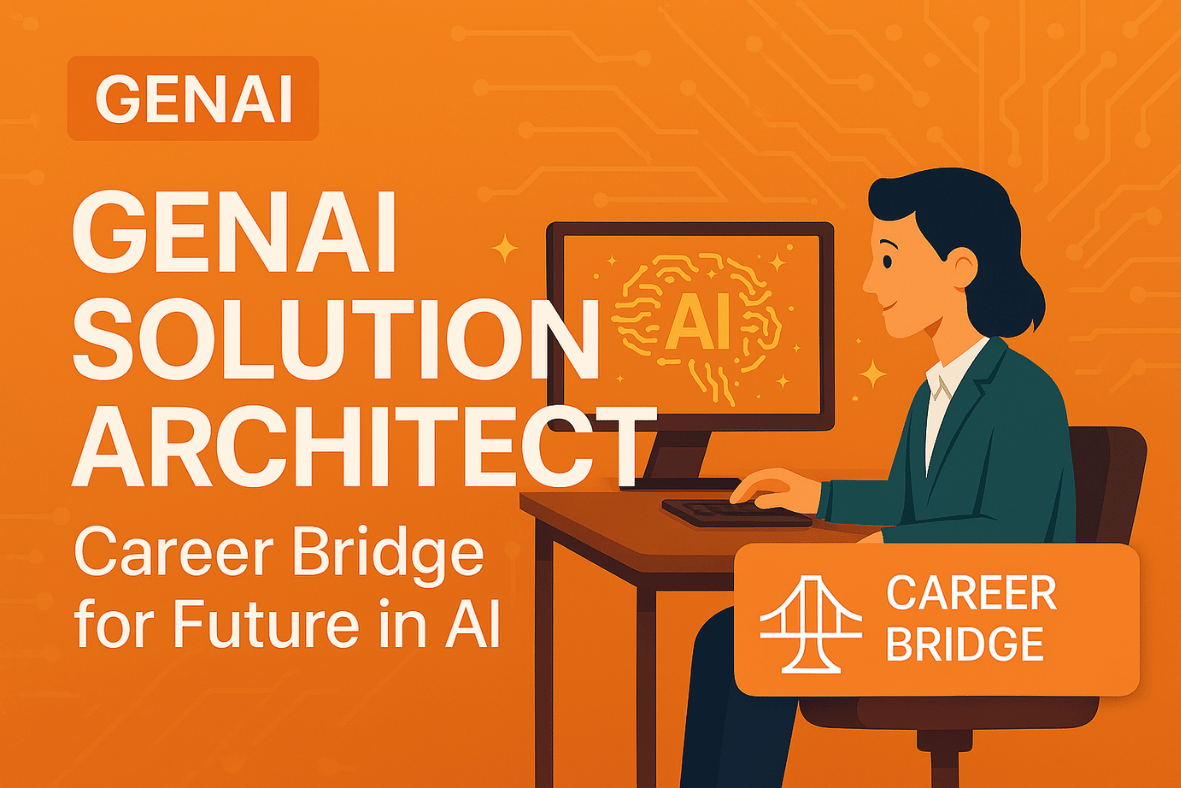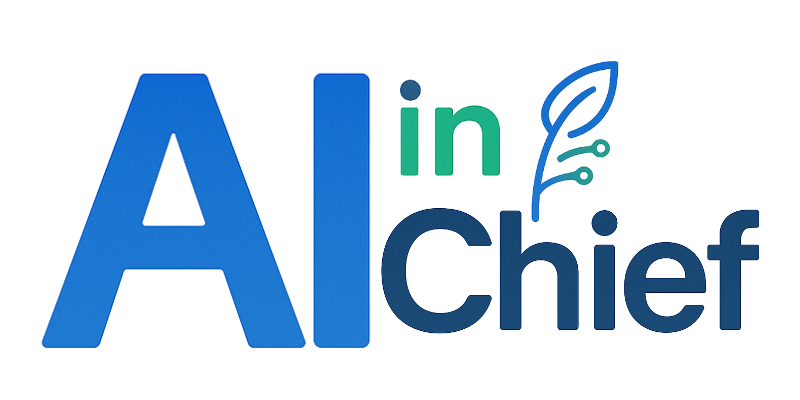Gen AI Solution Architect's Career Bridge for Future in AI
As organizations race to integrate Gen AI into real-world applications, the Gen AI Solution Architect becomes a mission-critical role, turning foundation models into enterprise-ready solutions. To pivot into this space or scale your current role, this guide will show you exactly what it takes.

🧠A Successful Gen AI Solution Architect
A Gen AI Solution Architect is the bridge between innovation and implementation. They specialize in designing, deploying, and optimizing Gen AI systems - leveraging models like GPT, LLaMA, Claude, or open-source LLMs to solve enterprise problems.
Success in this role means:
- Understanding the capabilities and limits of Gen AI
- Architecting solutions around privacy, compliance, scalability, and cost
- Leading cross-functional teams to bring AI ideas to production
📘 What You Will Learn
In this article, you'll uncover:
- The strategic value of this role in AI-first companies
- Skills and tools needed to succeed
- Interview prep - fast and focused
- A roadmap to become job-ready (even with no prior Gen AI experience)
🚀 Why This Role Matters in the AI Future
Gen AI is shifting how companies work - automating text generation, summarization, code completion, image synthesis, and more. But deploying Gen AI responsibly, scalably, and effectively? That’s not trivial.
The Gen AI Solution Architect ensures:
- Right model selection and fine-tuning
- Scalable and secure system design
- Integration with business workflows and existing platforms
- Ethical and compliant use of AI
Without this role, Gen AI remains a prototype. With it, it becomes a product.
✅ Key Success Factors for a Gen AI Solution Architect
- LLM Awareness: Know when to use which model (GPT vs Claude vs open-source)
- System Thinking: Design retrieval-augmented generation (RAG), vector databases, and orchestration pipelines
- Product Thinking: Focus on user experience and business value
- Security & Compliance: Implement guardrails, moderation, access control, and auditability
🧩 Key Responsibilities
Here’s what this role involves:
- Architecting Gen AI systems with LLMs, RAG, prompt engineering, and APIs
- Leading POCs and scaling them into production systems
- Designing data flows, prompt optimization loops, and vector search infrastructure
- Collaborating with engineering, compliance, UX, and product teams
- Monitoring model drift, hallucinations, latency, and cost efficiency
🧠 Capabilities You Need to Succeed
Core Capabilities:
- Understanding transformer architectures and prompt engineering
- Knowledge of tokenization, embeddings, and attention mechanisms
- Familiarity with model fine-tuning (LoRA, PEFT, QLoRA)
System Design & DevOps:
- Gen AI architecture patterns (RAG, agent-based design)
- Cloud-native deployment (SageMaker, GCP, Azure OpenAI)
- CI/CD, logging, tracing, and monitoring of Gen AI systems
Soft Skills:
- Product-led thinking, stakeholder management, risk assessment, and documentation
🛠️ Top Tools to Learn and Crack the Interview
| Area | Tools/Frameworks |
|---|---|
| LLM APIs & Models | OpenAI (GPT-4), Anthropic (Claude), HuggingFace Transformers |
| RAG & Vector Search | LangChain, LlamaIndex, FAISS, Weaviate, Pinecone |
| Prompt & Evaluation | PromptLayer, TruLens, LangSmith, Guardrails AI |
| Fine-tuning | PEFT, LoRA, QLoRA, HuggingFace PEFT |
| Deployment | Docker, Kubernetes, Ray, FastAPI, Streamlit |
| MLOps/Monitoring | MLflow, Arize AI, WhyLabs, Evidently AI |
📝 Top Keywords for Your CV
Highlight these to stand out:
- “Gen AI system architecture”
- “Retrieval-Augmented Generation (RAG)”
- “LLM evaluation and prompt optimization”
- “Enterprise Gen AI deployment”
- “Model fine-tuning with LoRA/QLoRA”
- “Security and compliance in Gen AI”
- “Scalable API-based LLM integrations”
- “Vector database integration (Pinecone, FAISS)”
📣 Don’t Have the Experience Yet?
🔥 No worries!
Do an internship with us and build your first Gen AI project - hands-on, end-to-end.
Get mentorship, feedback, and a portfolio project you can talk about in interviews.
⏱️ Only 1 Hour to Prepare? Here's What to Do
- Review what RAG is and how it works with LLMs
- Understand the architecture of LangChain and LlamaIndex
- Read a case study (like how Klarna or HubSpot used Gen AI)
- Prepare 1 prompt-engineering example and one LLM integration diagram
- Skim a blog on model evaluation tools (TruLens, LangSmith)
📅 Have More Time? Here's Your Prep Plan
🕐 1 Day Plan
- Watch a YouTube crash course on Gen AI architecture
- Explore LangChain or HuggingFace in a mini app
- Write a resume section for “Gen AI Architecture” using this article’s keywords
🧠 1 Week Plan
- Build a basic RAG pipeline using LangChain + FAISS
- Try deploying a chatbot with OpenAI API + Streamlit
- Research best practices in LLM cost optimization and evaluation
🚀 4 Weeks Mastery
- Complete a capstone Gen AI project (e.g., AI assistant, knowledge bot, summarizer)
- Join a Gen AI community (like EleutherAI, Weaviate slack, or HuggingFace forums)
- Write a LinkedIn post sharing your journey and project
- Practice Gen AI system design questions with a peer or coach
✨ Final Thoughts
The Gen AI Solution Architect is one of the most in-demand, future-ready roles in tech today. It’s not just about building LLM apps - it’s about designing safe, smart, and scalable Gen AI systems that actually create value.
Whether you’re a software engineer, ML professional, or cloud architect, this role is your bridge into the future of AI.
🚀 Ready to take the leap? Want mentorship or real-world experience?
👉 Join our internship or mentorship program. Your Gen AI career starts here.

